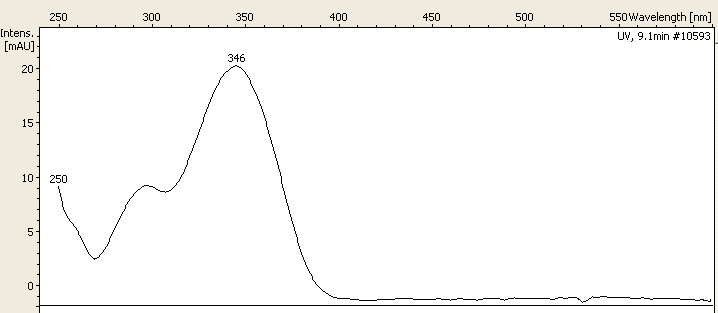Aesculin on:
[Wikipedia]
[Google]
[Amazon]
Aesculin, also called æsculin or esculin, is a coumarin glucoside that naturally occurs in the trees horse chestnut (''Aesculus hippocastanum''),
National Standard Methods
MSOP 48 (Bile aesculin agar) and BSOPTP 2 (Aesculin hydrolysis test (UK)) 

California buckeye
''Aesculus californica'', commonly known as the California buckeye or California horse-chestnut, is a species of buckeye native to California and southwestern Oregon.
Description
Aesculus californica is a large deciduous shrub or small tree, u ...
(''Aesculus californica''), and prickly box (''Bursaria spinosa''). It is also found in daphnin (the dark green resin of '' Daphne mezereum''), dandelion coffee, and olive
The olive, botanical name ''Olea europaea'' ("European olive"), is a species of Subtropics, subtropical evergreen tree in the Family (biology), family Oleaceae. Originating in Anatolia, Asia Minor, it is abundant throughout the Mediterranean ...
bark. It is reported to be present in olive bark, but not in olive leaf; therefore, identification of aesculin in abundance in an olive extract indicates that the extract has been derived from olive bark.
Uses
Aesculin is also used in a microbiology laboratory to aid in the identification of bacterial species (especially ''Enterococci'' and Listeria). In fact, all strains of Group D Streptococci hydrolyze aesculin in 40% bile.Aesculin hydrolysis test
Aesculin is incorporated into agar with ferric citrate and bile salts ( bile aesculin agar).MSOP 48 (Bile aesculin agar) and BSOPTP 2 (Aesculin hydrolysis test (UK))
Hydrolysis
Hydrolysis (; ) is any chemical reaction in which a molecule of water breaks one or more chemical bonds. The term is used broadly for substitution reaction, substitution, elimination reaction, elimination, and solvation reactions in which water ...
of aesculin forms aesculetin (6,7-dihydroxycoumarin) and glucose
Glucose is a sugar with the Chemical formula#Molecular formula, molecular formula , which is often abbreviated as Glc. It is overall the most abundant monosaccharide, a subcategory of carbohydrates. It is mainly made by plants and most algae d ...
. Aesculetin forms dark brown or black complexes with ferric citrate, allowing the test to be read.
The bile aesculin agar is streaked and incubated at for 24 hours. The presence of a dark brown or black halo indicates that the test is positive. A positive test can occur with '' Enterococcus'', '' Aerococcus'', and '' Leuconostoc''. Aesculin will fluoresce under long wave ultraviolet
Ultraviolet radiation, also known as simply UV, is electromagnetic radiation of wavelengths of 10–400 nanometers, shorter than that of visible light, but longer than X-rays. UV radiation is present in sunlight and constitutes about 10% of ...
light (360 nm) and hydrolysis of aesculin results in loss of this fluorescence.
''Enterococcus'' will often flag positive within four hours of the agar being inoculated.


References
{{coumarin Coumarin glycosides Microbiological media ingredients